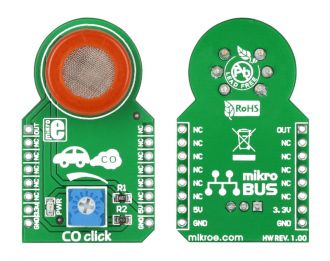Code Categories
- Click Boards (1762)
- Audio & Speech (167)
- Communication (493)
- Graphics & LCD (350)
- GSM / GPRS (18)
- GPS (19)
- Measurement (459)
- Power supply (47)
- Storage (44)
- Timers (Real time clock) (122)
- Other Codes (340)
- Internal MCU modules (83)
- Gaming and Fun (56)
- RFid (12)
- Motor Control (119)
- Bootloaders (17)
- Development Systems (68)
TOP Contributors
- MIKROE (2784 codes)
- Alcides Ramos (405 codes)
- Shawon Shahryiar (307 codes)
- jm_palomino (133 codes)
- Bugz Bensce (97 codes)
- S P (73 codes)
- dany (71 codes)
- MikroBUS.NET Team (35 codes)
- NART SCHINACKOW (34 codes)
- Armstrong Subero (27 codes)
Most Downloaded
- Timer Calculator (141549 times)
- FAT32 Library (74492 times)
- Network Ethernet Library (59029 times)
- USB Device Library (49023 times)
- Network WiFi Library (44793 times)
- FT800 Library (44371 times)
- GSM click (31048 times)
- mikroSDK (29914 times)
- PID Library (27473 times)
- microSD click (27470 times)

Package Manager
We strongly encourage users to use Package manager for sharing their code on Libstock website, because it boosts your efficiency and leaves the end user with no room for error. [more info]

CO click
Rating:
Author: MIKROE
Last Updated: 2019-01-29
Package Version: 1.0.0.1
mikroSDK Library: 1.0.0.0
Category: Gas
Downloaded: 7420 times
Followed by: 2 users
License: MIT license
This example demonstrates usage of the CO click board in mikroBUS form factor. This CO sensor is suitable for gas detecting equipment for Carbon Monoxide (CO). LCD shows PPM value of Carbon Monoxide (CO) concentration.
mikroSDK Library Blog

Library Description
The library covers all the necessary functions to control CO Click board. CO click communicates with the target board via analog ( AN ) pin. This library contains drivers for read ADC value of MQ-7 sensor.
Key functions:
float co_voltageConversion( uint32_t adcValue, float vRef )- Convert the voltage function.float co_getRatio( uint32_t adcValue, float vRef )- Get the sensor ratio function.float co_getSensorResistance( uint32_t adcValue, float vRef )- Get the sensor resistance.
Examples description
The application is composed of the three sections :
- System Initialization - Initializes GPIO and LOG structures, sets AN pin as input.
- Application Initialization - Initialization driver enables GPIO and ADC, also starts write log.
- Application Task - (code snippet) This is a example which demonstrates the use of CO Click board. CO Click reads ADC value. Results are being sent to the Usart Terminal where you can track their changes. All data logs on usb uart changes for every 1 sec.
void applicationTask()
{
valueADC = co_readADC();
Delay_100ms();
IntToStr( valueADC, logText );
mikrobus_logWrite( " ADC value: ", _LOG_TEXT );
mikrobus_logWrite( logText, _LOG_LINE );
mikrobus_logWrite( "-------------------", _LOG_LINE );
Delay_1sec();
}
Additional Functions :
void co_adcInit()- Function ADC initialization.uint32_t co_readADC()- Function read ADC value.
Other mikroE Libraries used in the example:
- ADC
- UART
- Conversions
Additional notes and information
Depending on the development board you are using, you may need USB UART click, USB UART 2 click or RS232 click to connect to your PC, for development systems with no UART to USB interface available on the board. The terminal available in all MikroElektronika compilers, or any other terminal application of your choice, can be used to read the message.











